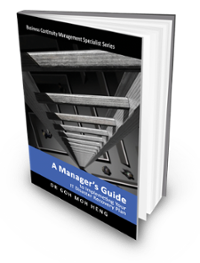Disaster Recovery Strategies Continuous Availability Vs Warm Site
In addition, there are four different types of Alternate Sites. They are cold sites, warm sites, hot sites and mobile sites. These alternate sites may be commercially leased or dedicated to an organization. The characteristics for each of these alternate sites will be discussed in the following sections, but keep in mind that regardless of the type of alternate site chosen, the facility must be able to support the system operations as defined in the DR Plan. In order to have a better understanding of the tasks to conduct a selection of the alternate sites, refer to Appendix H: DR Site - Selection & Evaluation Checklist. Cold Site typically consists of a facility with adequate space and infrastructure (electric power, telecommunications connections, and environmental controls) to support the IT systems. Space may have raised floors and other attributes suited for IT operations. The site does not contain IT equipment and usually does not contain office automation equipment, such as telephones, facsimile machines, or copiers. The organization using the cold site is responsible for providing and installing necessary equipment and telecommunications capabilities. The advantages of using a cold site are primary lower costs and no potential resources contention with other organizations. However, the biggest disadvantage is the time of recovery compared to other Alternate sites and no way to verify its workability until real disaster strikes. Warm Site is partially equipped office spaces that contain some or all of the system hardware, software, telecommunications and power sources. The warm site is maintained in an operational status ready to receive the relocated system. The site may need to be prepared for receiving the system and recovery personnel. In many cases, a warm site may serve as a normal operational facility for another system or function, and in the event of DR Plan activation, the normal activities are displaced temporarily to accommodate the disrupted system. The primary differences between a warm site and a hot site are: The primary disadvantage of a warm site as compared to a hot site is the amount of time and effort required to resume operation. Thus, a warm site will not be suitable for extremely critical transaction processing needs. Mobile Site is a self-contained, transportable shell custom-fitted with specific telecommunications and IT equipment necessary to meet system requirements. Goh, M. H. (2016).A Manager's Guide to Implementing Your IT Disaster Recovery Plan. Business Continuity Management Specialist Series (2nd ed.). Singapore: GMH Pte Ltd. Extracted from "Chapter 10: 10 DR Strategy: Alternate Sites" To know more about our blended learning program and when the next course is scheduled, feel free to contact our friendly course consultant colleagues viasales.ap@bcm-institute.org. They are the BL-DR-3 Blended Learning DR-300 IT Disaster Recovery Implementer and the BL-DR-5 Blended Learning DR-5000 IT Disaster Recovery Expert Implementer. Please feel free to send us a note if you have any of these questions tosales.ap@bcm-institute.org

Alternate Sites Recovery Strategy
Cold Site
Warm Site
Hot Site
Hot Site is an office space appropriately sized to support system requirements and configured with the necessary system hardware, supporting infrastructure, and support personnel that work 24 hours a day, seven days a week.
The primary advantage of the hot site is its 7 by 24 hours availability and exclusivity of usage. However, the disadvantage is its cost. Resources are needed to maintain consistency of hardware, software, configurations and applications at the hot site.Mobile Site
These are available for lease through commercial vendors. The facility often is contained in a tractor-trailer and may be driven to and set up at the desired alternate location. In most cases, to be a viable recovery solution, mobile sites should be designed in advance with the service provider, and service-level agreement (SLA) should be signed between the two parties. In other words, the time required to set up a mobile site can be extensive. Thus, prior arrangements and coordination are essential. This will ensure the delivery time of the mobile site during a disaster will not exceed the system's allowable outage time.Reference

More Information About IT DR Blended Learning


Source: https://blog.bcm-institute.org/it-disaster-recovery/dr-strategy-types-of-alternate-sites
0 Response to "Disaster Recovery Strategies Continuous Availability Vs Warm Site"
Post a Comment